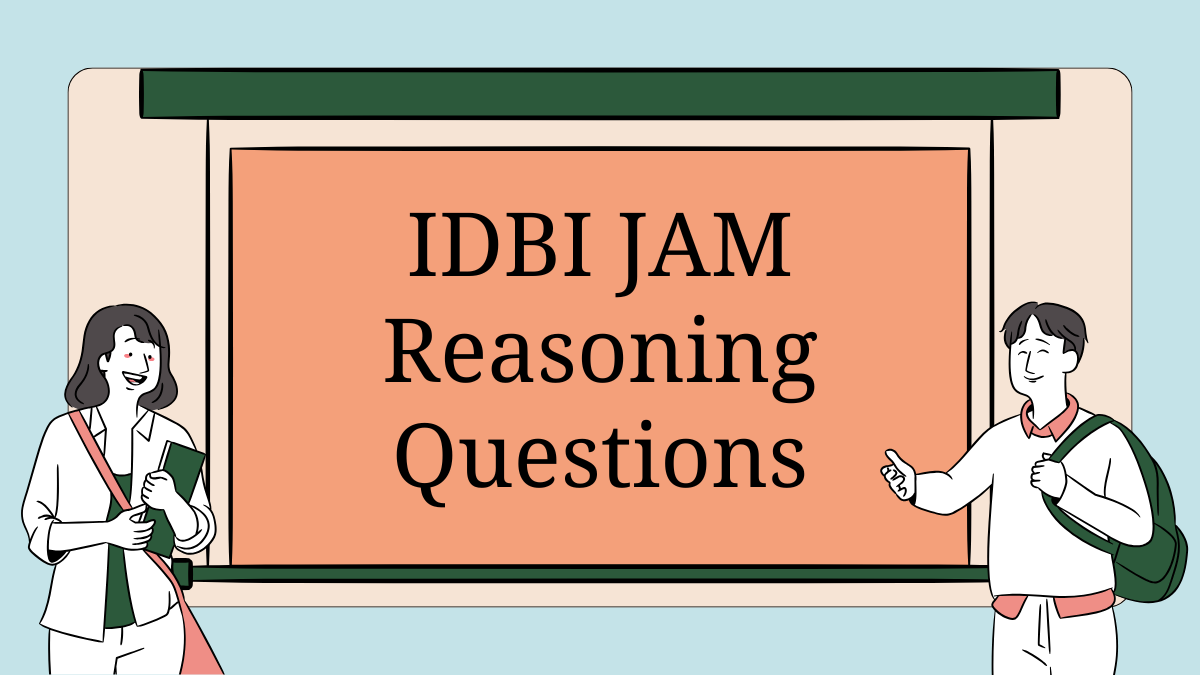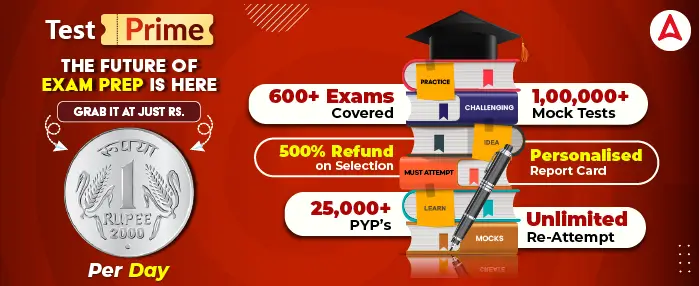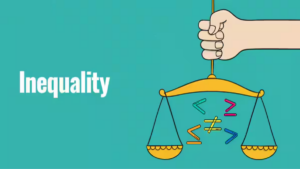The IDBI Junior Assistant Manager (JAM) Exam 2025 is one of the most awaited banking recruitment tests, attracting thousands of aspirants nationwide. Among the various sections in the exam, the Reasoning Ability section plays a crucial role in determining overall performance. It tests a candidate’s logical thinking, decision-making skills and problem-solving ability under time pressure. To perform well in this section, understanding the key topics and types of questions that usually appear in the exam is essential.
IDBI JAM Reasoning Section
The Reasoning section in the IDBI JAM Recruitment 2025 Online Test is designed to evaluate how effectively a candidate can think through a problem and arrive at a logical solution. It carries significant weight in the overall exam structure and is often a deciding factor for qualifying in the next stage of the recruitment process. With a good accuracy rate and time management, this section can boost the overall score considerably.
IDBI JAM Reasoning Questions 2025
Directions (1-5): Study the following information carefully and answer the following questions carefully.
Nine persons – R, S, T, U, V, W, X, Y and Z, are sitting in a row facing the north. There are twelve chairs in the row, where three chairs are vacant. Neither the chairs at the end nor the adjacent chairs are vacant. Chairs are marked 1 to 12 from left to right. Only one chair in an odd position is vacant.
T is sitting at the fifth chair from the left end. Three persons are sitting between T and Z. Neither Z nor S are sitting at the end. V is sitting at an even number chair. R is sitting at third chair to the left of V but none of them is sitting at the end. Only two vacant chairs are placed between R and S. Both S and U are sitting adjacent seat to neither Z nor V. One person is sitting between V and X who is sitting to the right of S. Two persons are sitting between U and V. U is not sitting adjacent to the vacant chair. Y and Z are not sitting together.
Q1. How many persons are sitting between R and Z?
(a) Three
(b) Four
(c) One
(d) Two
(e) None of these
Q2. Which of the following statement is not true?
(a) U sits third to the left of T
(b) Two persons are sitting between W and S
(c) Z sits second to the right of S
(d) Four persons are sitting to the left of V
(e) All the above statements are true
Q3. Who among the following person sits immediate right of T?
(a) The one who sits third to the left of Z
(b) W
(c) V
(d) U
(e) None of these
Q4. What is the position of X with respect to T?
(a) Second to the right
(b) Third to the left
(c) Immediate left
(d) Fourth to the right
(e) None of these
Q5. Which of the following person sits adjacent to the vacant chair?
I. U, V and X
II. R, T and Z
III. Y, T and Z
(a) Only II
(b) Both II and III
(c) Only I
(d) Both I and II
(e) None of these
Directions (6-10): Study the following information carefully and answer the questions given below.
Eight persons i.e. A, B, C, D, E, F, G and H live in two different flats i.e., Flat P and Flat Q of a four-floor building such that the lowermost floor is numbered as 1 and the floor just above it is numbered as 2 and so on till the topmost floor is numbered as 4. Flat P is to the west of flat Q whereas flat P of floor 2 is immediately above flat P of floor 1 and flat Q of floor 2 is immediately above flat Q of floor 1. Each of them likes different musical instruments- Guitar, Piano, Sitar, Flute, Drum, Cello, Violin and Harp but not necessarily in the same order.
The one who likes Guitar lives two floors above the one who likes Drum. The one who likes drum lives on an even numbered floor. E lives to the north-east of F and lives below the one who likes Guitar. D lives to the south of F. A and C live on the same floor. The one who likes sitar lives to the east of A. B lives immediately above G’s flat. The one who likes violin lives to the east of H. The one who likes Harp lives two floors above the one who likes Piano. The one who likes flute lives to the west of the one who likes Piano. B doesn’t like Cello.
Q6. Who among the following likes Sitar?
(a) None of these
(b) B
(c) C
(d) D
(e) F
Q7. Which among the following pair of persons live in the same flat?
(a) The one who likes Harp, B
(b) The one who likes Violin, D
(c) A, B
(d) F, the one who likes Piano
(e) H, the one who likes flute
Q8. In which among the following floor and flat does B live?
(a) Floor 2, flat P
(b) Floor 3, flat P
(c) Floor 3, flat Q
(d) Floor 2, flat Q
(e) Floor 4, flat Q
Q9. Which among the following statement is not true?
(a) D lives on the bottom most floor.
(b) The sum of the floors of G and A is an odd number
(c) C lives in flat Q
(d) No one lives to the east of the one who likes Violin
(e) F doesn’t like Cello
Q10. Which among the following combination is correct?
(a) H- 4th floor
(b) C- Flat P
(c) G- Piano
(d) D- Cello
(e) A- 3rd floor
Directions (11-15): Each of the questions below, consist of a question and three statements numbered I, II and III given below it. You have to decide whether the data given in the statements are sufficient to answer the question or not. Read all statements and give answer.
Q11. Seven persons sit around a circular table such that all of them face away from the center. Who among the following sits third to the left of C?
I. G sits two persons away from A. B sits adjacent to both E and G. D sits two persons away from B. C sits adjacent to F.
II. Three persons sit between E and A. D sits adjacent to A. F sits two persons away from the one who sits adjacent to C.
III. Only two persons sit between A and E who doesn’t sit adjacent to G. F sits second to the right of D.
(a) Both statements I and II are sufficient to answer
(b) Both statements I and III are sufficient to answer
(c) Both statements II and III are sufficient to answer
(d) Statement II alone is sufficient to answer
(e) Statements I, II and III even together are not sufficient to answer
Q12. Seven persons live in seven floor building such that the bottommost floor is numbered as 1, floor just above it is numbered as 2 and so on till the topmost floor is numbered as 7. How many persons live between R and S?
I. S lives on an even numbered floor below T. As many persons live above P as below the one who lives two floors above U.
II. Only three persons live between P and S. T lives two floors above V. U lives on the bottommost floor. R lives above Q but not adjacent to S.
III. S lives on an even numbered floor. T lives on a prime numbered floor. Only two persons live between U and Q.
(a) Both statements II and III are sufficient to answer
(b) Both statements I and III are sufficient to answer
(c) All statements I, II and III are sufficient to answer
(d) Statement II alone is sufficient to answer
(e) Statements I, II and III even together are not sufficient to answer
Q13. From which of the following statement, the given conclusion “Some Toyota being Nissan is a possibility” follows?
I. All Audi is Toyota. Some Audi is Nissan. No Nissan is Thar. Only a few Thar is Bentley.
II. Only a few Thar is Audi. All Audi is Toyota. Some Toyota is Bentley. No Nissan is Bentley.
III. All Toyota is Bentley. No Bentley is Nissan. Only a few Nissan is Audi. Some Thar is not Audi.
(a) Either statement I or II are sufficient to answer
(b) Either statement I or III are sufficient to answer
(c) Statement I alone is sufficient to answer
(d) Statement II alone is sufficient to answer
(e) Statement III alone is sufficient to answer
Q14. Nine persons sit around a triangular table such that three of them sit at the corner and the two persons sit at each side of the table. All of them face towards the center. Who among the following sits fourth to the left of I?
I. J sits third to the left of H. Only two persons sit between D and H. F sits adjacent to the one who sits next to B.
II. B sits adjacent to both J and E. Only two persons sit between J and D. I doesn’t sit at the corner of the table.
III. B and E sit adjacent to each other. C sits third to the right of B. The one who sits adjacent G sits two persons away from I
(a) Both statements I and II are sufficient to answer
(b) Both statements I and III are sufficient to answer
(c) All statements I, II and III are sufficient to answer
(d) Statement II alone is sufficient to answer
(e) Statements I, II and III even together are not sufficient to answer
Q15. Seven persons of different heights are arranged in descending order from left to right. Who is the second tallest among all?
I. P is taller than Q but shorter than S. U is not the tallest among all. R is just taller than V. Q is taller than R.
II. S is taller than T and U. U is taller than at least two persons. P’s height is twice of S’s height but he is not the tallest among all.
III. Q is taller than R but shorter than P. T is just shorter than P. Only two persons are between S and Q. V is shorter than R and S. U is shorter than S but taller than R.
(a) Both statements I and II are sufficient to answer
(b) Both statements I and III are sufficient to answer
(c) Both statements II and III are sufficient to answer
(d) Statement II alone is sufficient to answer
(e) Statement III alone is sufficient to answer
Directions (16-19): In each of the question below, some statements are given followed by some conclusions. You have to take the given statements to be true even if they seem to be at variance with commonly known facts. Read all the conclusions and then decide which of the given conclusions logically follows from the given statements disregarding commonly known facts.
Q16. Statements: Some tree is leaf.
Only leaf is sky.
Only a few land is leaf.
All land is seed.
Conclusions:
(a) No sky being seed is a possibility.
(b) Some seed will not be leaf.
(c) Some tree is not land.
(d) All tree is seed.
(e) All sky is land.
Q17. Statements: Only soft is music.
All genius are soft.
No papaya is soft.
All boys are genius.
Conclusions:
(a) No genius is music.
(b) All boys are music.
(c) Some papaya can be genius.
(d) Some music not being papaya is a possibility.
(e) Some soft not being music is a possibility.
Q18. Statements: All board is screen.
No game is digital.
Only a few cheque is digital.
Some digital is not board.
Conclusions:
(a) Some screen is not cheque.
(b) No board is cheque.
(c) All game can never be board.
(d) Some cheque is not board.
(e) All cheque can never be digital.
Q19. Statements: All space is arrow.
No space is mark.
Only a few mark are exam.
Only a few mark are lock.
Conclusions:
(a) All exam is space.
(b) No lock is space.
(c) All marks can be exam.
(d) Some arrow can be mark.
(e) Some arrow is not lock.
Q20. In the given number ‘58763423’, if 1 is subtracted from the first half digits second half of the digits are multiplied by 2 after that all the digits are arranged in descending order from right to left. Then, what will be the sum of all the digits at the even place from the left end of the new number formed after rearrangement?
(a) 23
(b) 25
(c) 24
(d) 26
(e) None of these
Directions (21-25): A number and word arrangement machine when given an input line of words and numbers rearranges them following a particular rule in each step. The following is an illustration of input and rearrangement:
Input: 59 Permanent 72 Various 45 Particulars 64 Abacus 82 Geometry
Step I: 72 59 Permanent Various 45 64 Abacus 82 Geometry Particulars
Step II: 82 72 59 Various 45 64 Abacus Geometry Particulars Permanent
Step III: 45 82 72 59 Various 64 Abacus Particulars Permanent Geometry
Step IV: 64 45 82 72 59 Abacus Particulars Permanent Geometry Various
Step V: 59 64 45 82 72 Particulars Permanent Geometry Various Abacus
Step V is the last step of the given arrangement. Based on its logic, rearrange the given input.
Input: 66 sanctions 77 flouting 55 reforms 83 anniversary 43 revolution
Q21. Which among the following element is third to the left of second element from the right end in step III?
(a) 66
(b) Anniversary
(c) Flouting
(d) 77
(e) Reforms
Q22. How many letters according to the alphabetical series are between the third letter of the second word from the right end and second letter of the first word from the left end in step IV?
(a) 9
(b) 8
(c) 6
(d) 7
(e) 5
Q23. In which among the following step, the order “55 83 43 anniversary revolution sanctions” remains same?
(a) Step I
(b) Step II
(c) Step III
(d) Step V
(e) Step IV
Q24. What is the product of the number which is third from the left end in step III and the number which is second from the right end in step I?
(a) 2365
(b) 3215
(c) 2114
(d) 1345
(e) 6235
Q25. What is the sum of the elements which are second, third and fifth from the left end in step II?
(a) 166
(b) 136
(c) 231
(d) 236
(e) 186
| Answers | |||||||||
| 1 | b | 2 | c | 3 | c | 4 | d | 5 | a |
| 6 | c | 7 | e | 8 | d | 9 | e | 10 | c |
| 11 | b | 12 | a | 13 | d | 14 | e | 15 | b |
| 16 | b | 17 | e | 18 | e | 19 | d | 20 | c |
| 21 | c | 22 | b | 23 | d | 24 | a | 25 | e |
IDBI JAM Reasoning Time Management Strategy & Difficulty Level
One of the most critical aspects of solving reasoning questions is managing time effectively. Since some puzzles and seating arrangement questions may be lengthy, candidates should identify and attempt the simpler questions, like inequality, syllogism, or coding-decoding, first. This strategy helps in maximising attempts with accuracy before moving on to time-consuming sets.
Over the past few years, the reasoning section in IDBI JAM exams has seen a trend of moderate to high difficulty, especially with complex puzzle sets and input-output questions. As the competition increases, the level of reasoning is also being raised to test deeper logical skills.
Preparation Tips for Reasoning Section of IDBI JAM
Practice Daily: Solving reasoning questions regularly helps improve speed and familiarity with patterns.
Start with Basics: Build a strong foundation in topics like syllogism, directions, and coding-decoding.
Learn Shortcuts: Identify patterns and use shortcut methods to solve questions quickly, especially in puzzles.
Mock Tests: Attempt timed mock tests and analyze which areas consume more time or result in frequent errors.
Revision of Concepts: Revise key formulas and reasoning rules periodically to keep them fresh during the exam.
| Related Articles | |
| IDBI Junior Assistant Manager Syllabus | IDBI Junior Assistant Manager Previous Year Paper |
| IDBI Junior Assistant Manager Cut Off | IDBI Junior Assistant Manager Salary |




 Inequality Tricks for Beginners, Easy Me...
Inequality Tricks for Beginners, Easy Me...
 Reasoning Questions for SBI Clerk Mains ...
Reasoning Questions for SBI Clerk Mains ...
 500+ Reasoning Questions PDF for SBI Cle...
500+ Reasoning Questions PDF for SBI Cle...








